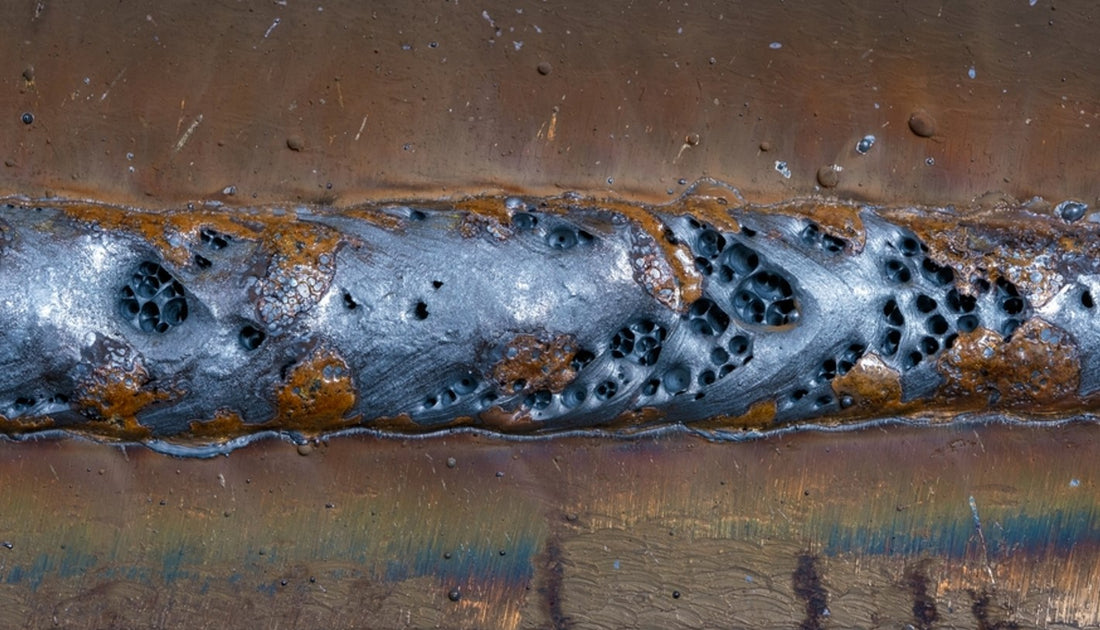What is Porosity in Welding: Trick Aspects and Their Effect On Weld Quality
What is Porosity in Welding: Trick Aspects and Their Effect On Weld Quality
Blog Article
Recognizing Porosity in Welding: Discovering Causes, Impacts, and Avoidance Techniques
Porosity in welding is a persistent difficulty that can considerably impact the top quality and integrity of welds. As specialists in the welding sector are cognizant, understanding the causes, impacts, and prevention techniques connected to porosity is important for accomplishing durable and reputable welds. By delving into the origin of porosity, examining its harmful effects on weld top quality, and discovering reliable prevention methods, welders can improve their knowledge and abilities to generate premium welds continually. The detailed interaction of variables adding to porosity needs a thorough understanding and a proactive strategy to make certain successful welding outcomes.
Typical Reasons For Porosity
Contamination, in the type of dust, oil, or corrosion on the welding surface, produces gas pockets when warmed, leading to porosity in the weld. Improper protecting happens when the securing gas, commonly used in procedures like MIG and TIG welding, is incapable to completely safeguard the molten weld pool from reacting with the surrounding air, resulting in gas entrapment and succeeding porosity. Additionally, poor gas coverage, usually due to inaccurate circulation prices or nozzle positioning, can leave parts of the weld unguarded, allowing porosity to develop.
Results on Weld High Quality
The visibility of porosity in a weld can significantly endanger the overall top quality and stability of the bonded joint. Porosity within a weld develops spaces or tooth cavities that compromise the framework, making it a lot more at risk to cracking, deterioration, and mechanical failing. These spaces act as stress and anxiety concentrators, lowering the load-bearing capacity of the weld and raising the possibility of early failing under applied stress and anxiety. Additionally, porosity can also serve as prospective sites for hydrogen entrapment, more worsening the destruction of the weld's mechanical buildings.
Additionally, porosity can prevent the efficiency of non-destructive testing (NDT) methods, making it testing to find other issues or interruptions within the weld. This can lead to significant security problems, especially in critical applications where the structural stability of the bonded components is extremely important.

Avoidance Techniques Overview
Given the damaging effect of porosity on weld high quality, efficient avoidance techniques are vital to maintaining the architectural stability of welded joints. Additionally, picking the proper welding criteria, such as voltage, current, and take a trip rate, can help lessen the threat of porosity formation. By incorporating these avoidance strategies into welding techniques, the event of porosity can be substantially reduced, leading to stronger and more reliable welded joints.
Importance of Correct Protecting
Appropriate securing in welding plays a vital function in stopping climatic contamination and making certain the integrity of welded joints. Securing gases, such as argon, helium, or a combination of both, are commonly utilized to safeguard the weld pool from reacting with components airborne like oxygen and nitrogen. When these responsive components enter call with the hot weld pool, they can trigger porosity, causing weak welds with reduced mechanical residential properties.

Poor protecting can lead to various issues like porosity, spatter, and oxidation, compromising the architectural integrity of the bonded joint. As a result, adhering to proper shielding practices is important to generate premium welds with very little issues and guarantee the longevity and reliability of the bonded components (What is Porosity).
Tracking and Control Methods
How can welders effectively monitor and manage the welding process to make certain ideal outcomes and avoid defects like porosity? One key approach is with using sophisticated monitoring technologies. These can consist of real-time monitoring systems that give responses on criteria such as voltage, current, take a trip rate, and gas circulation rates. By continually keeping an eye on these variables, welders can recognize variances from the optimal conditions and make immediate changes to avoid porosity page development.

Additionally, implementing proper training programs for welders is important for keeping track of and controlling the welding procedure successfully. What is Porosity. Educating welders on the relevance of preserving regular criteria, such as proper gas shielding and travel speed, can aid protect against porosity issues. Regular assessments and qualifications can also guarantee that welders are skilled in monitoring and controlling welding procedures
Furthermore, the usage of why not check here automated welding systems can improve tracking and control capabilities. These systems can exactly manage welding criteria, minimizing the probability of human error and making certain regular weld high quality. By incorporating advanced tracking innovations, training programs, and automated systems, welders can successfully check and manage the welding process to decrease porosity issues and accomplish top quality welds.
Final Thought

Report this page